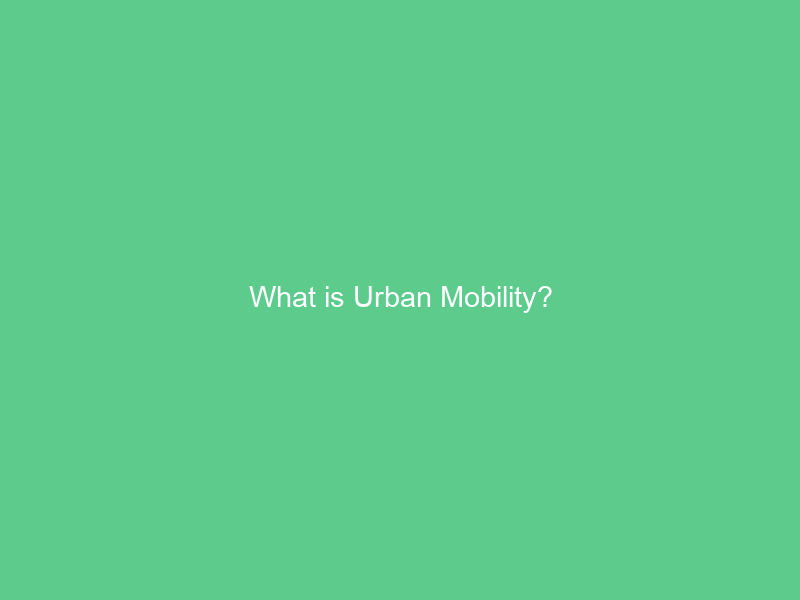Urban mobility refers to how people get around a city for either work or pleasure, including walking, cycling, public transit and the car.
Urbanization and economic development have placed immense strain on transport systems, creating increased traffic congestion and pollution levels. Traditional responses such as expanding car-centric infrastructure only compound this issue further.
Getting around a city
Urban mobility refers to all aspects of moving around a city, from how people get to work or leisure activities such as shopping and dining to making travel simpler for citizens – reducing congestion times or public transport delays while making journeys quicker for citizens.
Public transportation systems play a pivotal role in improving urban mobility by alleviating traffic congestion and carbon emissions, offering affordable travel options, and encouraging sustainable urban development. Innovative planning techniques such as transit-oriented development promote car-free living by clustering developments around public transport hubs.
Key factors of urban mobility are pedestrian safety and air quality. To overcome these obstacles, cities must adopt innovative solutions which prioritize people-centred urban mobility solutions while decreasing journeys and distances.
Commutes
Public transportation options can reduce commute times and fuel usage while improving road safety and environmental preservation. Plus, using them often costs much less than owning and maintaining a vehicle; commuters can save money by traveling during off-peak hours and using navigation apps like Waze to avoid traffic jams.
An evolving city’s commuting zone may alter as new businesses enter outlying areas or factories close or lay off workers, leading to secondary commuters living within core city borders but working in outlying suburbs or industrial zones and primary commuters living outside but travelling into central city for work. When this happens, commuting zones should be adjusted so as to reflect functional urban areas more accurately.
Freight transport
Freight transport refers to the practice of moving goods or merchandise from one location to another for a fee, whether by truck, ship, plane or train.
Air freight is often chosen when speed is of paramount importance; however, this form of shipping tends to be the more costly option.
Road transport can be an ideal option for shorter distances and perishable goods shipments, offering flexibility, accessibility and door-to-door delivery services.
Rail freight offers businesses an economical, eco-friendly option for longer journeys, thanks to its higher fuel efficiency and lower operating costs. Intermodal shipping combines road freight with other forms of transport such as rail freight to reduce fuel consumption by optimizing routes and cutting consumption; learn more here.
Multimodal transport
Utilizing multiple modes of transportation saves time, reduces road infrastructure stress, and helps businesses save money. Furthermore, switching heavy truck traffic over to rail transport promotes sustainability.
Fast air transportation services also help improve customer satisfaction and build trust between businesses and their clients. In particular, this form of delivery ensures goods arrive on time to meet client expectations while strengthening business reputations.
Business can reduce both carbon emissions and energy consumption by investing in new technology to optimize freight operations, hiring additional trucks or using alternative means during peak periods when demand is higher, opting for greener shipping methods such as rail or water transport to cut costs further, or simply making use of their current fleet for deliveries.
MaaS
MaaS is an all-in-one mobility platform offering people various transport options and services, such as public transit, car sharing, ride hailing services and electric vehicles, in one app. In addition, travel planning/scheduling functionality as well as subscription plans for users are also provided within MaaS.
Maas can save travelers money by eliminating the costs of purchasing individual tickets or fares and maintaining and insuring vehicles; it can also help alleviate traffic congestion by decreasing the number of private vehicles on the road.
MaaS can save people a variety of costs associated with driving their own vehicles, including fuel, maintenance costs, fees and taxes as well as long-term parking costs. Furthermore, commuters no longer have to drive themselves to off-site work meetings, late-night entertainment venues and sports stadiums – this solution also eliminates parking hassles!

